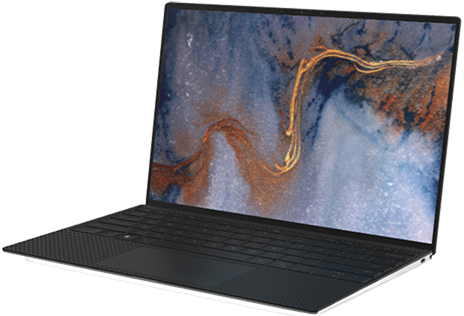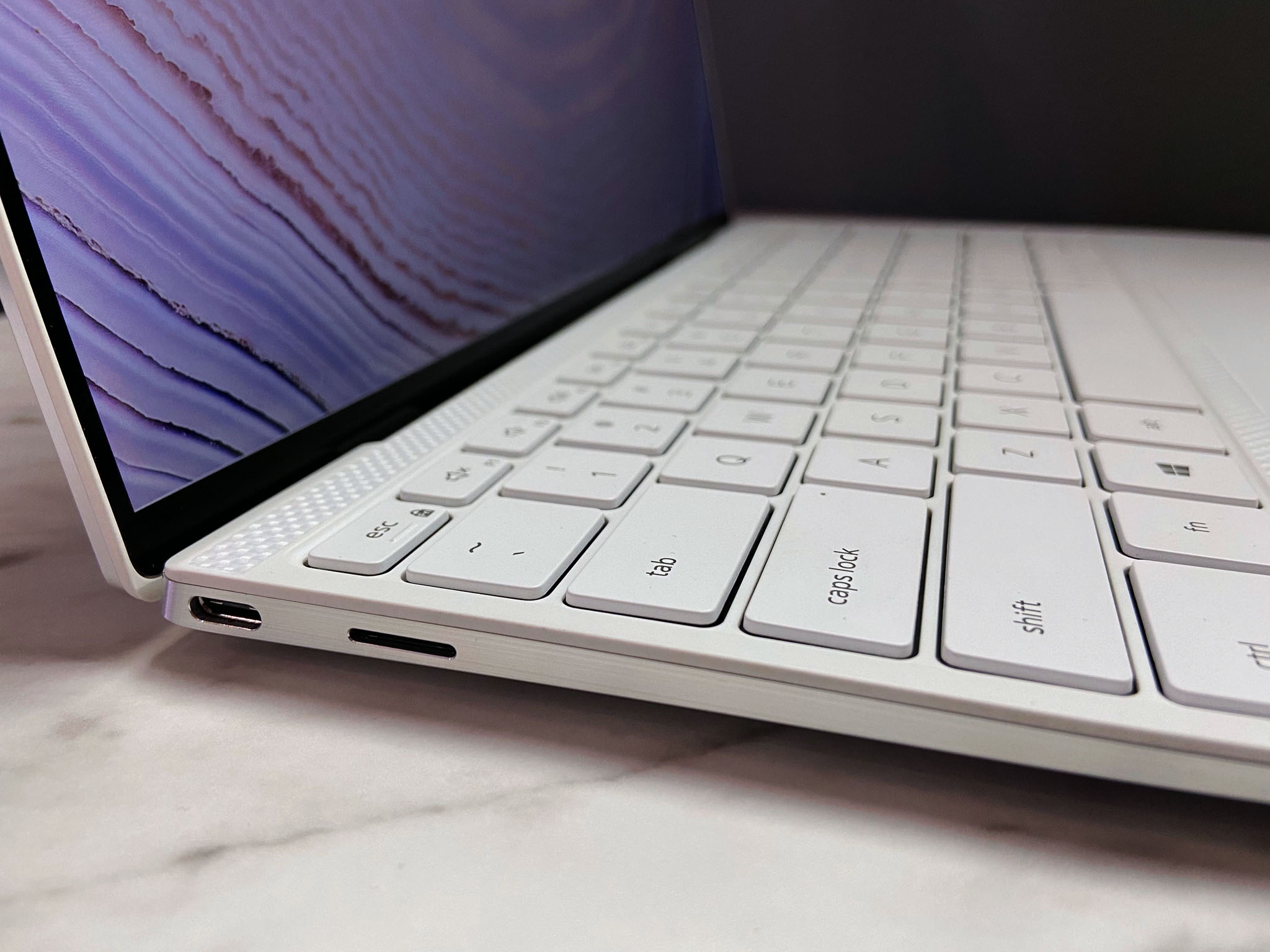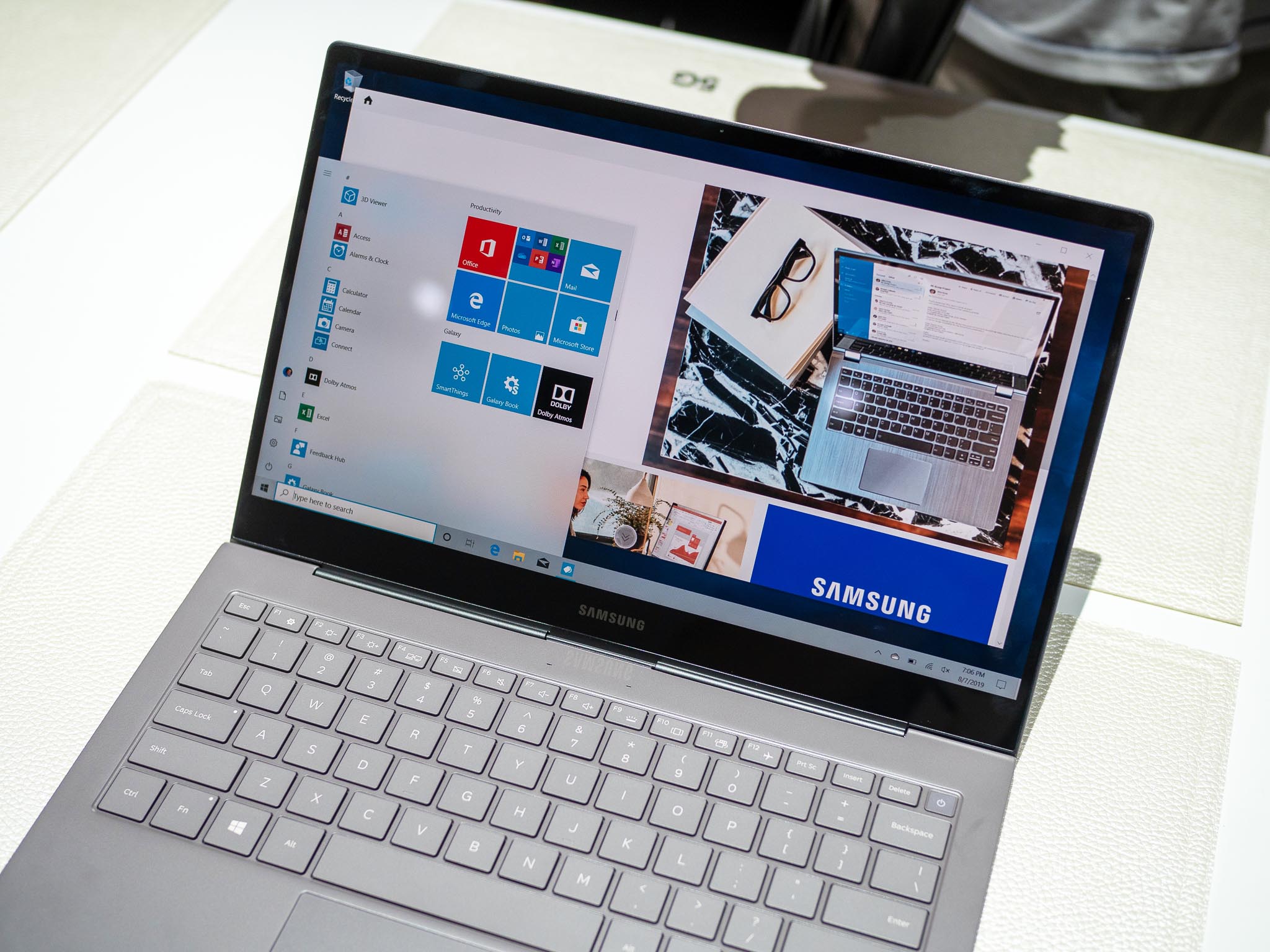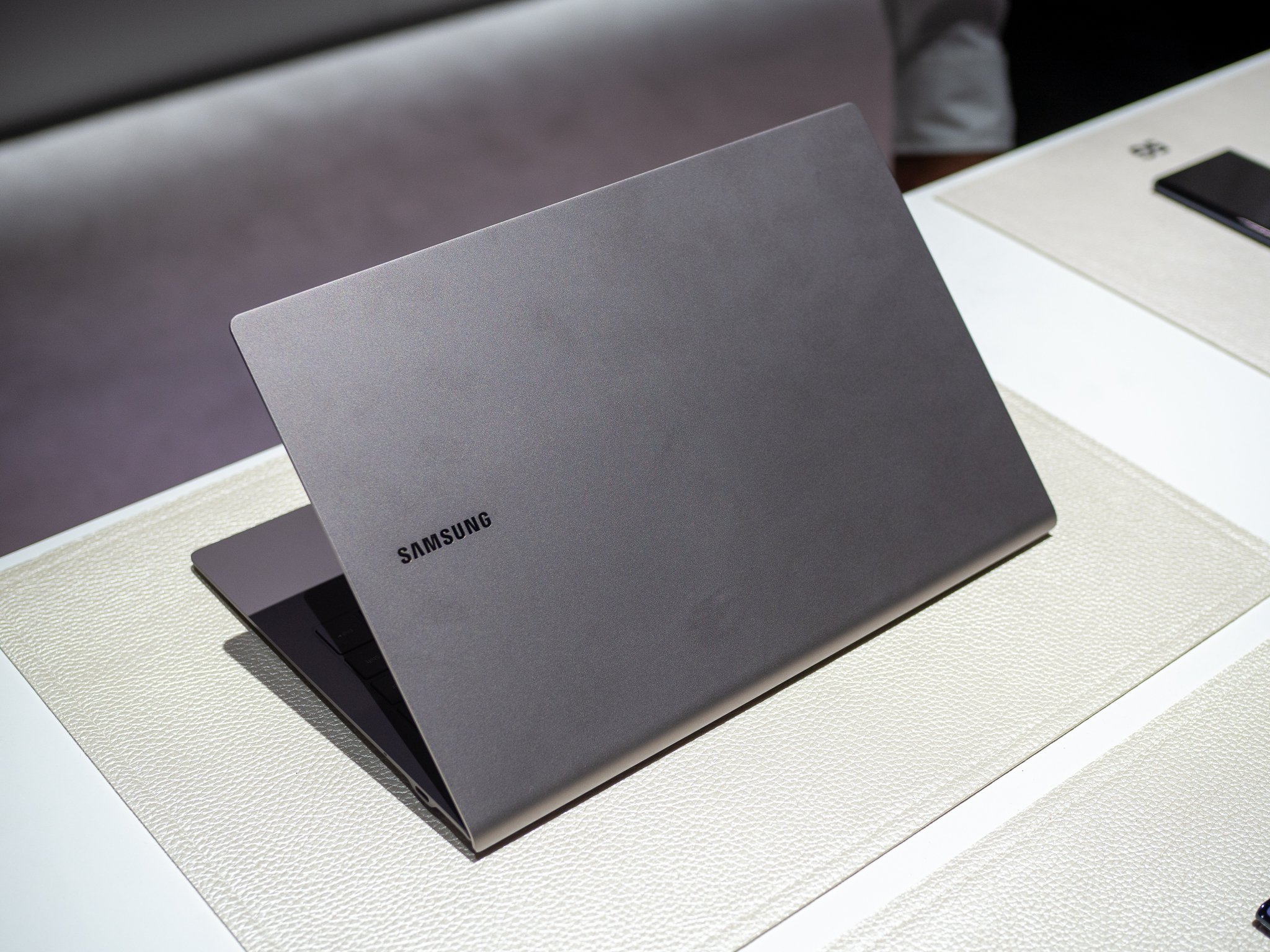

Updated Display and Keyboard
Dell's latest version of the XPS 13 (9300) brings a display with a 16:10 aspect ratio and thin lower bezel, larger keyboard keys and touchpad, and instant-on capabilities with long battery life. It's not as portable due to a lack of LTE connectivity and slightly heavier chassis, but it does bring better performance thanks to 10th Gen Intel hardware.
Pros
- Beautiful 16:10 display with optional 4K
- 10th Gen Intel Core processors
- Comfortable keyboard and touchpad
- IR camera and fingerprint reader
- Dual Thunderbolt 3 and Wi-Fi 6
Cons
- No LTE connectivity
- Price climbs quickly

Ultraportable Notebook
Samsung's ARM-powered Galaxy Book S focuses on mobility, with an extremely thin and light chassis coupled with LTE connectivity. It offers solid battery life and it can handle general productivity tasks, but it won't match the performance available from the XPS 13. Still, it's the right choice for those always on the move.
Pros
- Thin and light for mobility
- 4G LTE connectivity
- Solid battery life
- Fingerprint reader for Windows Hello
- Instant-on capabilities
Cons
- Not as powerful
- FHD display only
- ARM has some limitations
- No Thunderbolt 3
Dell XPS 13 vs. Samsung Galaxy Book S tech specs
| Header Cell - Column 0 | Dell XPS 13 (9300) | Samsung Galaxy Book S |
|---|---|---|
| Processor | 10th Gen Intel Core i3-1005G1 Core i5-1035G1 Core i7-1065G7 | Qualcomm Snapdragon 8cx |
| RAM | 4GB, 8GB, 16GB LPDDR4x | 8GB LPDDR4x |
| Storage | 256GB, 512GB SSD | 256GB SSD |
| Display size | 13.4 inches Touch and non-touch | 13.3 inches Touch |
| Display resolution | 1920x1200 3840x2400 | 1920x1080 |
| Aspect ratio | 16:10 | 16:9 |
| Graphics | Intel UHD Graphics (i3, i5) Intel Iris Plus (i7) | Adreno 680 |
| Ports | Two Thunderbolt 3 3.5mm audio microSD card reader | Two USB-C 3.5mm audio microSD card reader |
| Connectivity | Wi-Fi 6 Bluetooth 5.0 | Wi-Fi 5 4G LTE Bluetooth 5.0 |
| Camera | Front-facing 720p | Front-facing 720p |
| Biometrics | IR camera Fingerprint reader | Fingerprint reader |
| Battery | 52Wh | 42Wh |
| Dimensions | 11.6 x 7.8 x 0.58 inches (296mm x 199mm x 14.8mm) | 12 x 8 x 0.24-0.46 inches (305.2mm x 203.2mm x 6.2-11.8mm) |
| Weight | From 2.65 pounds (1.2kg) | 2.12 pounds (0.96kg) |
Design and features
The refreshed XPS 13 (9300) is mostly the same as the previous generation, with the main changes coming to the display, keyboard, and audio. FHD non-touch models weigh in at 2.65 pounds (1.2kg) and measure just 0.58 inches (14.8mm) thin, making it rather portable… just not as portable as the Galaxy Book S. The Book S slims down to just 0.24 inches (6.2mm) at its thinnest point and weighs in at 2.65 pounds.
When combined with 4G LTE connectivity — a Nano SIM slot is coupled with the microSD card reader — the Book S becomes a formidable traveling partner. Along with LTE connectivity, the Galaxy Book S has Wi-Fi 5 and Bluetooth 5.0. It's great for staying in touch when out of Wi-Fi range, but speeds won't match Wi-Fi 6, which is offered with the XPS 13.
Both laptops employ a standard notebook design, meaning they don't come apart or rotate around for convertible modes. You should have no issues with "lapability," and a lack of office desk shouldn't cut into your productivity. The keyboard on the XPS 13 has been redesigned with larger keycaps, and it now reaches to the edges of the chassis. Key travel is ample, and along with the larger Precision touchpad, you shouldn't have issues typing and pointing without accessories. On the other hand, the slim build of the Book S makes for rather short key travel, but it's something you can get used to. We always recommend trying out a keyboard in person before buying a laptop, since it usually comes down to personal preference.
Ports are limited on both laptops compared to larger Ultrabooks. The XPS 13 sports two Thunderbolt 3, 3.5mm audio, and a microSD card reader. The powerful Thunderbolt 3 ports allow you to do more compared to the dual USB-C ports on the Galaxy Book S, like connecting a powerful docking station to turn your laptop into a workstation centerpiece. Along with two USB-C, the Book S has 3.5mm audio and a microSD card reader. You can use the card reader on either laptop to expand storage using a compatible microSD card.
For an extra layer of security, both laptops offer a fingerprint reader for Windows Hello. Both are built into the power button for a clean look. The XPS 13 takes things a step further, offering up an IR camera for facial recognition through Windows Hello. Despite that thin display bezel, the cameras are still located above the screen. Both the Book S and XPS 13 also have front-facing 720p cameras for video conferencing and stills. As for audio, the XPS 13 (9300) is now using the same type of speakers as the XPS 13 2-in-1, which is a very good thing. We haven't tested audio side-by-side, but keep in mind the Galaxy Book S includes AKG speakers and Dolby Atmos.
Display
Samsung has played the display game rather safely with a lone 13.3-inch FHD touch option. It has a standard 16:9 aspect ratio and thin bezel. Samsung knows how to make great displays, and this one is no different with accurate color and contrast. You shouldn't mind sitting down in front of it day in and day out, but if you want a slightly boxier screen or 4K, you'll have to go with the XPS 13.
Dell redesigned the display to eliminate the bottom chin almost entirely, allowing for a 16:10 aspect ratio. Now all four sides of the display have almost no bezel, which adds up to an absolutely beautiful look. Because of the aspect ratio, the FHD+ resolution is set at 1920x1200, while the 4K UHD+ resolution is at 3840x2800. FHD+ comes in touch or non-touch (for better battery life), whereas the UHD+ model comes in touch. You're going to get about 500 nits brightness no matter what, as well as accurate color and contrast.
All the latest news, reviews, and guides for Windows and Xbox diehards.
Price and performance
The XPS 13 can handle a considerable workload without slowing down, equipped with a 10th Gen Intel Core i3, i5, or i7 processor (CPU). Especially with the higher-end Core i7 and its Intel Iris Plus integrated graphics, there should be no problems with productivity work, light gaming, and even some editing. You can currently add up to 16GB of RAM and a 512GB solid-state drive (SSD) to the XPS 13 to complement the CPU. RAM is soldered, though the SSD is user upgradable after purchase. Dell's laptop is going to be the right decision if you need the most performance, but the Galaxy Book S makes a case for itself if all you're going to focus on is relatively lightweight productivity work.
The Qualcomm Snapdragon 8cx in the Book S manages performance somewhere around the 8th Gen Intel Core i5 level, which isn't anything to scoff at. It'll handle word processing, web browsing, and video streaming with ease, though due to its ARM approach it will have to emulate some x86 32-bit apps. This does cause a slight decrease in performance compared to native ARM64 apps, but everything should be stable. Unfortunately, the Book S seems to currently only be available in one configuration with 8GB of RAM and a 256GB SSD.
Both the XPS 13 and Galaxy Book S offer instant-on capabilities and long battery life that should easily get you through a workday. We haven't been able to directly test the batteries, but Samsung claims up to 25 hours of video playback time from the 42Wh battery. That number no doubt dips when actually going about productivity work (especially when emulating x86 32-bit apps). Similarly, Dell claims the XPS 13 can achieve up to 19 hours of life, though again that number is bound to dip in real-world usage.
An introductory XPS 13 model with Core i3 CPU, 4GB of RAM, 256GB SSD, and FHD+ non-touch display costs about $1,000, which is the same price for the Galaxy Book S with Snapdragon 8cx, 8GB of RAM, 256GB SSD, and FHD touch display. If you're on a limited budget and you have to choose one of these models, the Galaxy Book S is no doubt quite attractive, especially with the touch display and LTE connectivity.
If you have more to spend, investing in an XPS 13 with Core i5 or Core i7 CPU, touch display (especially 4K), and larger SSD should make more sense unless you absolutely need the LTE. A high-end XPS 13 model with Core i7 CPU, 16GB of RAM, 512GB SSD, and 4K touch display costs about $1,900.
Dell's XPS 13 (9300) is a better buy for most people
With 10th Gen Intel Core CPUs, up to a beautiful 4K touch display, Thunderbolt 3 ports, comfy keyboard and touchpad, and excellent battery life, the XPS 13 is an ideal laptop for a lot of people. It's not as mobile due to a lack of LTE connectivity, but it's an otherwise complete package.
Samsung's Galaxy Book S is better for those on the move
The Galaxy Book S won't match the full performance potential of the XPS 13, but the Snapdragon 8cx CPU puts up a good fight against a productivity workload. Its LTE capabilities and solid battery life make it a great option if you're often traveling or just want the most mobile laptop possible.

Cale Hunt brings to Windows Central more than nine years of experience writing about laptops, PCs, accessories, games, and beyond. If it runs Windows or in some way complements the hardware, there’s a good chance he knows about it, has written about it, or is already busy testing it.





